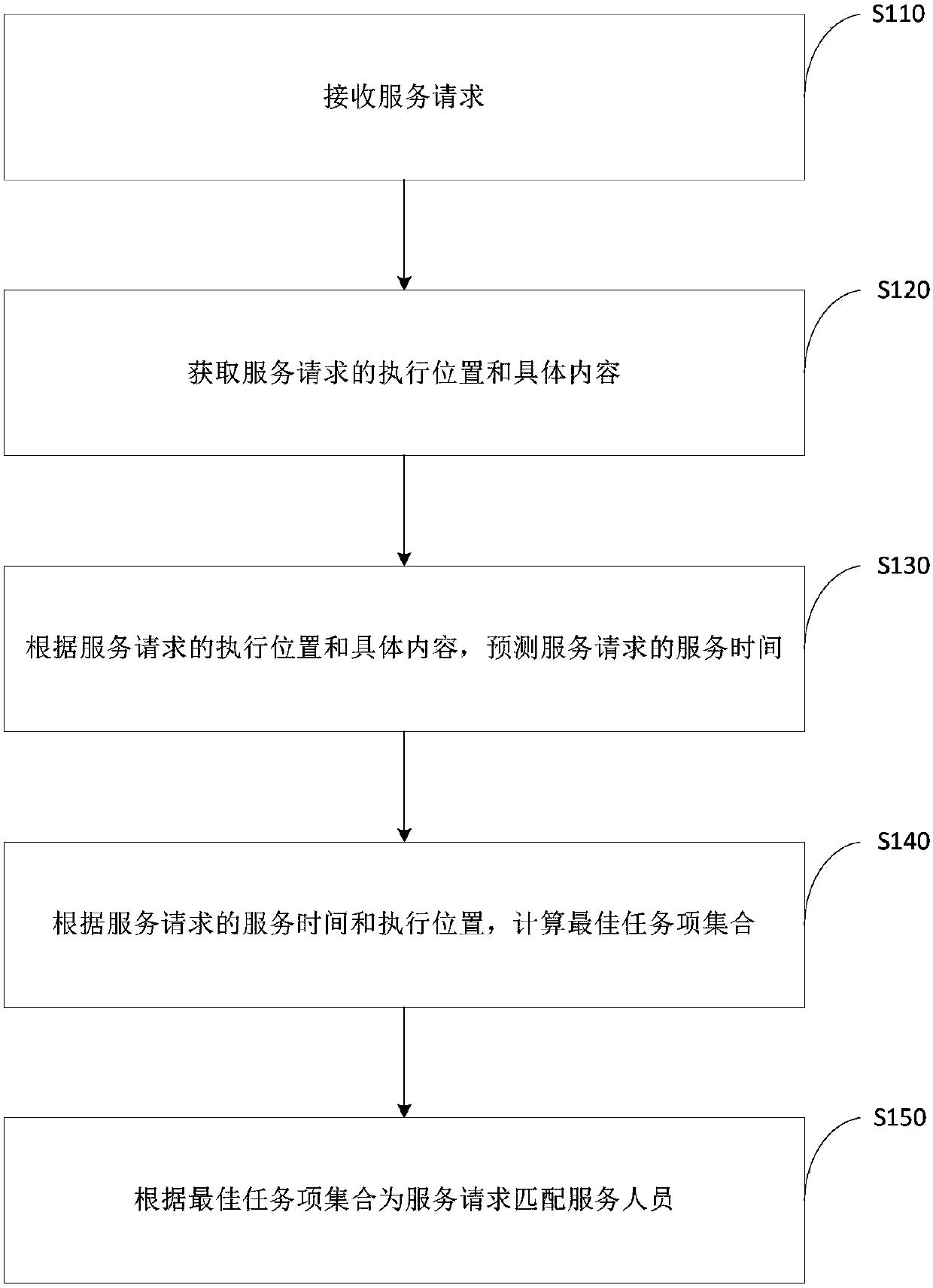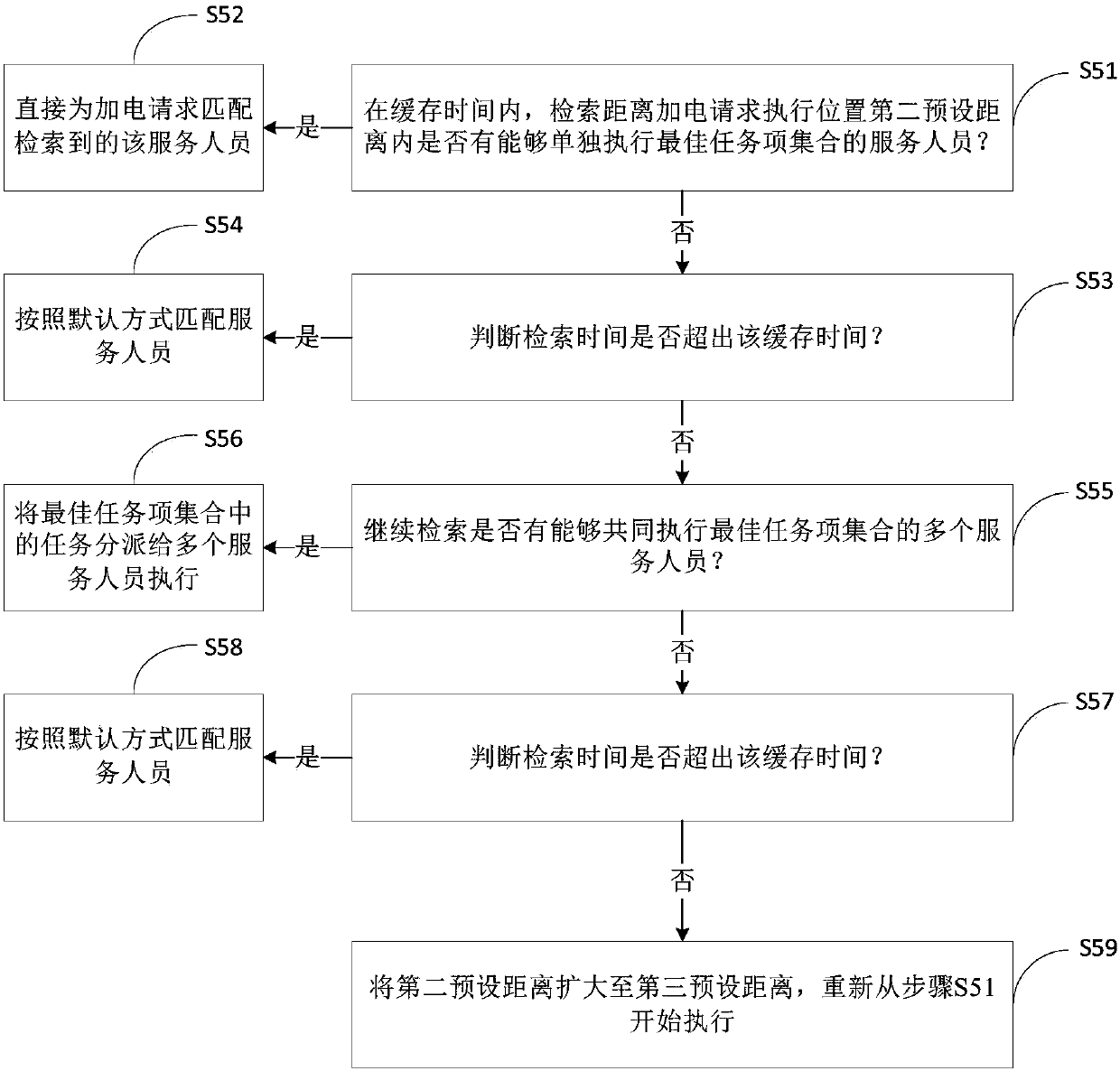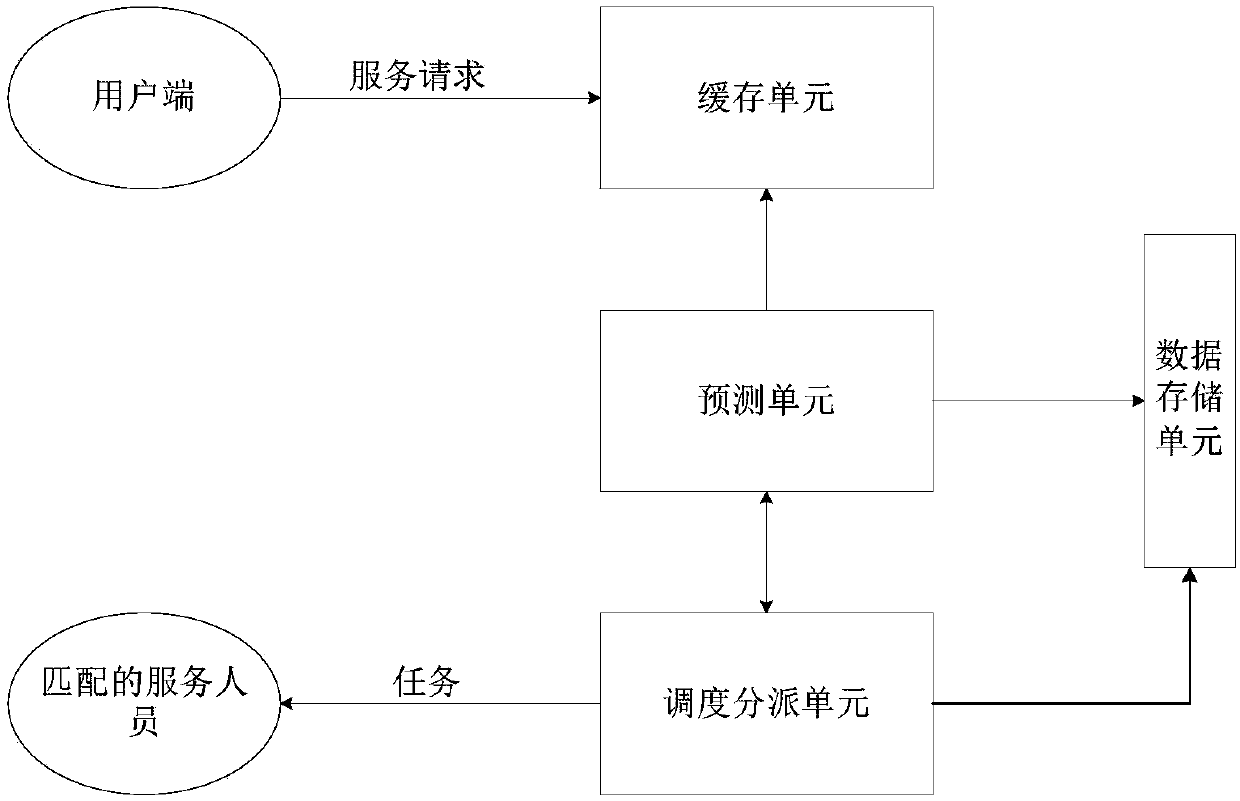Combined task assignment method and system
A technology of task assignment and task, which is applied in the field of combined task assignment method and system, can solve the problems of single service target and inability to effectively utilize idle time of service personnel, and achieve the effects of improving overall efficiency, saving operating costs, and improving operating efficiency
- Summary
- Abstract
- Description
- Claims
- Application Information
AI Technical Summary
Problems solved by technology
Method used
Image
Examples
Embodiment Construction
[0079] Preferred embodiments of the present invention are described below with reference to the accompanying drawings. Those skilled in the art should understand that these embodiments are only used to explain the technical principles of the present invention, and are not intended to limit the protection scope of the present invention. For example, although the various steps of the method of the present invention are described in a specific order in the present application, these orders are not limiting, and those skilled in the art can perform the steps in different orders without departing from the basic principles of the present invention. Follow the steps described.
[0080] refer to figure 1 , figure 1 It is a flow chart of the combined task assignment method of the present invention. Such as figure 1 As shown, the combined task assignment method of the present invention includes the following steps: S110, receiving the service request; S120, obtaining the execution l...
PUM
 Login to View More
Login to View More Abstract
Description
Claims
Application Information
 Login to View More
Login to View More - R&D
- Intellectual Property
- Life Sciences
- Materials
- Tech Scout
- Unparalleled Data Quality
- Higher Quality Content
- 60% Fewer Hallucinations
Browse by: Latest US Patents, China's latest patents, Technical Efficacy Thesaurus, Application Domain, Technology Topic, Popular Technical Reports.
© 2025 PatSnap. All rights reserved.Legal|Privacy policy|Modern Slavery Act Transparency Statement|Sitemap|About US| Contact US: help@patsnap.com



